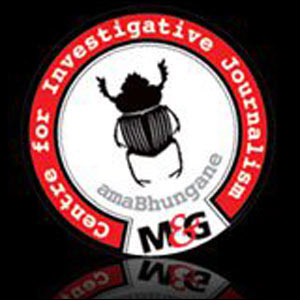In a rowdy debate in the National Assembly on November 15, President Jacob Zuma distanced himself from the process that resulted in the state spending huge amounts on upgrading security at his Nkandla home.
Expressing anger at being portrayed as corrupt for security expenses foisted on him by the state, Zuma said: "There are two different things: my homes that are built by me and my family, and the security features that the government wanted … to satisfy their own requirements … These are matters that the government … don't ask me, don't ask me."
But documents obtained by amaBhungane cast some doubt on the president's reply – though there are significant gaps in the material released. What is there suggests Zuma – referred to as "the Principal" – played an important role in how the process unfolded and had an input in some of the decisions:
More coverage
The Nkandla documents
Nkandla: Number One emerges a clear winner
The Nkandla files: Project railroaded from the start
Long battle to get hold of redacted Nkandla documents
Nkandla: An orgy of kowtowing
The Nkandla files: Secrecy obsessions betray political sensitivities
- An October 2009 letter from police divisional commissioner for supply chain management states: "By instruction of … President Zuma, the existing house at Nkandla, currently accommodate [sic] SAPS members must be converted as part of the president's household."
- It appears Zuma was key to setting deadlines – and it was at least partially this urgency that led officials to adopt "emergency" procurement procedures. For instance, in one memo the public works project manager, Jean Rindel, states: "Minister [Geoff] Doidge and [deputy director general Rachaad] Samuels … instructed this office to continue with immediate effect, as he was given a deadline by the principal to have the site operational by December 1 2010."
- A June 3 2011 memo asking for permission not to go out on tender for electronic security features notes: "The project must be completed by October 30 2011 as per instruction from the principal. A negotiated procurement process would be faster."
- The project was divided into two phases, with phase one including "emergency" work to ensure the basic security of the site. When contemplating phase two, officials were again influenced to abandon more open tender procedures and negotiate with the same contractors who had been appointed for phase one.
- A memo dated January 10 2010 states: "A meeting was held with [then public works] deputy minister [Hendrietta] Bogopane-Zulu … on December 21 2010 in which she confirmed that the principal indicated that he does not want other contractors on site in phase two."
- It appears there was some detailed consultation with Zuma. Minutes of an emergency progress meeting on November 30 2010 state: "Bogopane-Zulu said she had a discussion with the principal on the relocation (of families). [She] mentioned she will conclude with the principal on the close off (fencing) of the relocation and report at the next meeting."
At a progress meeting on June22 2011 in was agreed that "[Minenhle] Makhanya (the architect) would meet with the principal and present the fire pool".
A high-level document dated March 18 2011 relating to the allocation of costs between the state and the president noted: "It may be necessary for these issues to be discussed with the principal as the financial implication directly affects him."
Records of these discussions with "the principal" are not included in the documents released by public works.
Zuma's spokesperson, Mac Maharaj, did not respond to questions about the president's involvement in the process.
* Got a tip-off for us about this story? Email [email protected]

The M&G Centre for Investigative Journalism (amaBhungane) produced this story. All views are ours. See www.amabhungane.co.za for our stories, activities and funding sources.